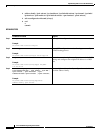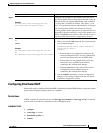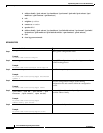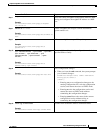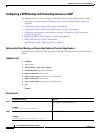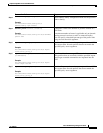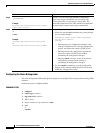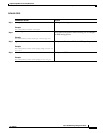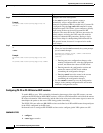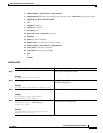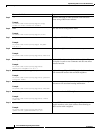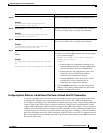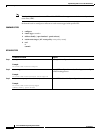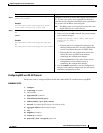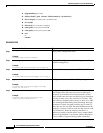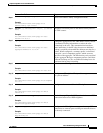
Implementing BGP on Cisco IOS XR Software
How to Implement BGP on Cisco IOS XR Software
RC-100
Cisco IOS XR Routing Configuration Guide
OL-14356-01
Configuring PE-PE or PE-RR Interior BGP sessions
To enable BGP to carry VPN reachability information between provider edge (PE) routers you must
configure the PE-PE interior BGP (IBGP) sessions. A PE uses VPN information carried from the remote
PE router to determine VPN connectivity and the label value to be used so the remote (egress) router can
demultiplex the packet to the correct VPN during packet forwarding.
The PE-PE, PE-route reflector (RR) IBGP sessions are defined to all PE and RR routers that participate
in the VPNs configured in the PE router.
Perform this task to configure PE-PE IBGP sessions and to configure global VPN options on a PE.
SUMMARY STEPS
1. configure
2. router bgp as-number
Step 5
rd {as-number:nn | ip-address:nn | auto}
Example:
RP/0/RP0/CPU0:router(config-bgp-vrf)# rd
345:567
Configures the route distinguisher.
Use the auto keyword if you want the router to
automatically assign a unique RD to the VRF.
Automatic assignment of RDs is possible only if a router ID
is configured using the bgp router-id command in router
configuration mode. This allows you to configure a globally
unique router ID that can be used for automatic RD
generation. The router ID for the VRF does not need to be
globally unique, and using the VRF router ID would be
incorrect for automatic RD generation. Having a single
router ID also helps in checkpointing RD information for
BGP graceful restart, because it is expected to be stable
across reboots.
Step 6
end
or
commit
Example:
RP/0/RP0/CPU0:router(config-bgp-vrf)# end
or
RP/0/RP0/CPU0:router(config-bgp-vrf)# commit
Saves configuration changes.
• When you issue the end command, the system prompts
you to commit changes:
Uncommitted changes found, commit them before
exiting(yes/no/cancel)?
[cancel]:
–
Entering yes saves configuration changes to the
running configuration file, exits the configuration
session, and returns the router to EXEC mode.
–
Entering no exits the configuration session and
returns the router to EXEC mode without
committing the configuration changes.
–
Entering cancel leaves the router in the current
configuration session without exiting or
committing the configuration changes.
• Use the commit command to save the configuration
changes to the running configuration file and remain
within the configuration session.
Command or Action Purpose



